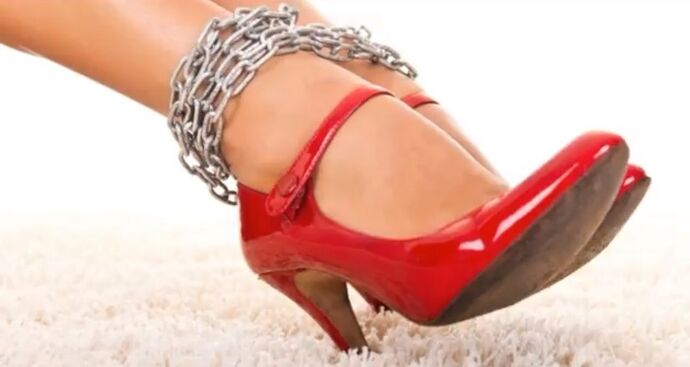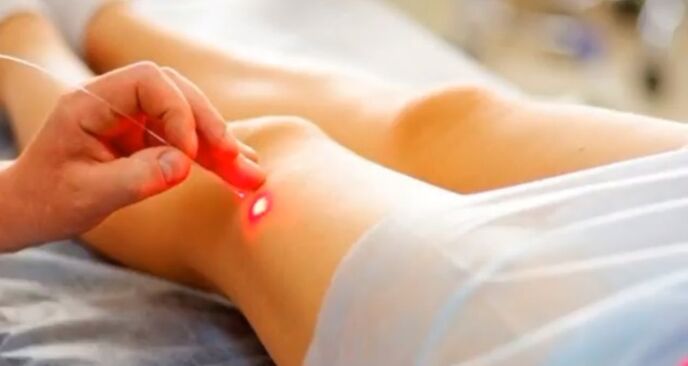Varicose veins or varicose veins are a pathological process that many people experience. In most cases, the disease affects the arteries of the legs, causing them to elongate, deform, and thin the vessel walls. In addition, the valves inside the arteries stop performing their full function, which disrupts the systemic circulation and causes blood stasis in the arteries.
Under the influence of the described factors, the vessels increase in size, appear on the surface, are visible through the skin. As a result, an entire network of blood vessels appears on the surface of the skin, often with nodules and trophic ulcers. However, in addition to aesthetic disorders, the problem is deeper and is often accompanied by painful feelings.
The nature of pain with varicose veins
First of all, it should be understood that the term "very often" does not mean that the pain is accompanied by 100% varicose veins. Much depends on a number of factors, the individual characteristics of the patient's body, and even in the later stages of the pathological process there may be no pain.
If we classify painful feelings, we will first consider their localization:
- In most cases, the pain syndrome is localized directly at the site of vascular lesions, their deformation.
- In second place in terms of frequency of localization is the area of the gastrocnemius muscle, and the pain itself is localized closer to the popliteal region of the foot.
- The lowest probability of localization of pain syndrome is in the ankle area.

Of course, as the pathological process progresses, the likelihood of developing pain in the legs increases. This is due to the aggravating condition of the blood vessels, their increase, the progression of stagnant processes and, accordingly, the increase in vascular pressure. Finally, the pressure can increase so much that the walls of the vessel will not be able to withstand it, threatening the formation of internal bleeding, hematoma and trophic ulcers.
Therefore, the nature of the pain depends on the stage of the disease:
- In the early stages, painful or more unpleasant pulling or squeezing sensations occur with swelling of the legs. In addition to impaired blood flow, it is important to understand that fluid is retained in the legs, causing swelling. In the early stages, edema is cyclical, more often seen in the evening, and discomfort occurs as a result of fatigue, walking in shoes during the day, and in extreme cases, skin tension.
- The fact of fatigue deserves special attention. With varicose veins, the legs get tired more quickly. Initially, this is expressed during prolonged physical activity during the day (if the patient stands for a long time, walks a lot, etc. ). However, as the disease progresses, fatigue is felt more often and more intensely, so the characteristic painful sensations are felt. In this case, the pain is dull, as well as pulling or pain.
- In the approximately second stage of the disease, patients complain of severity with worsening of the condition of the vessels, their more severe deformation, and moderate valve dysfunction. In this case, the pain is characterized as an explosion, in some cases even acute. This is due to the increased pressure in the arteries, and if you first lie down and put your feet on a hill to reduce the pain, you will have to deal with them in the future using medication.
- It is likely that the development of pain syndrome, as well as its increasing intensity in the case of the transition of varicose veins to the final, fourth stage. It is at this stage that vascular deformation and vascular pressure peak.
It is difficult to describe more precisely the characteristics of painful sensations with varicose veins in the legs. It depends on the individual characteristics of each patient's body, as well as the characteristics of the course of the disease. But the pain can be felt as follows:
- stupid.
- towing.
- It hurts.
- Explosion.
- Compressive.
- sharp.
- It looks like a sack that encloses with a drawstring.
Also, in the second and more often in the third stage of the development of the pathology, pain is accompanied by muscle cramps, which disturb the patients, especially during sleep at night.

Causes of painful feelings
Understanding where the pain in varicose veins comes from can help you fight the problem more effectively or prevent the onset of pain. Thus, pain occurs under the influence of the following causes:
- Pathological changes in the vascular bed slow down blood circulation in certain areas of the vessels. This causes a decrease in blood flow, which leads to a lack of oxygen and pain.
- The bloodstream helps to eliminate waste products that are constantly produced by the body in small amounts. Due to the decrease in blood flow and its stagnation, the products of decay are slowly removed, which leads to the appearance of toxins that poison living cells, and this process also causes painful sensations.
- Trophic disorders, which also contribute to the appearance of pain, appear in the later stages of the development of varicose veins and only intensify with the development of the disease, causing increasingly severe pain.
The pain is exacerbated by physical exertion, leg fatigue, and is often exacerbated in the afternoon or evening.
Methods of combating pathology
In order to completely eliminate the pain, all efforts should be directed to the treatment of the pathological process. To do this, you need to consult a doctor who will make a diagnosis, based on which he will determine the most appropriate treatment for a particular patient.
The treatment will take some time, during which time the patient will suffer from pain. Therefore, it is important not only to understand how to deal with varicose veins, but also to know how to relieve pain.
First aid in the fight against pain
Pain relief is only a symptomatic part of treatment, and in most cases it does not affect the resolution of the main problem - varicose veins.
However, it is very important to consider the main ways to deal with pain, unpleasant and painful feelings:
- In the early stages of the disease, the pain is unstable, its intensity is very low and occurs mainly in the evening. In such cases, it is enough to take a lying position and put your feet on a pillow or just lean against the wall so that your feet are above body level. This position facilitates blood flow, thereby reducing pain and swelling.
- It is also very useful to lightly massage the lower extremities by massaging and rubbing. Remember that you can stretch your legs during the day, which is very useful in the later stages of the disease.

Traditional painkillers
If you have severe pain that bothers you constantly, as well as if there is no way to massage or relax yourself, you should seek medical help. Of course, only a doctor should prescribe medication, but in most cases the following medications are used:
- We are talking about special means in the form of gels - mainly non-steroidal anti-inflammatory drugs (NSAIDs), which effectively relieve pain, as well as a clear anti-inflammatory and moderately antipyretic effect.
- In some cases, you can resort to painkillers, but with varicose veins, their effect is insignificant and short-lived. These are mainly analgesics and antispasmodics.
- If the pain is accompanied or aggravated by convulsions, it is worth talking to your doctor about the use of muscle relaxants that help reduce muscle spasms.
- Also, traditional methods to combat the painful sensations of varicose veins in the legs include wearing special compression stockings, socks or tights. This method is considered the most effective in terms of pain relief, and its effect is the longest. These underwear should only be purchased from pharmacies, and consult your doctor first, as they have different degrees of compression.
Folk remedies
In folk medicine, there are also many ways to eliminate or prevent pain caused by the development of varicose veins. Here are some of the most effective methods and recipes:
- Horse chestnut - an alcoholic tincture of the fruit of this tree should be prepared. To do this, 100 grams of peeled chestnuts are crushed, placed in a glass jar and poured 500 milliliters of vodka. Place the container in a dark place and leave at room temperature for 7-8 days, stirring once a day. After that, the tincture is filtered and rubbed with it on the feet before going to bed or during the day, if the pain is disturbed during the day.
- Products based on beeswax or propolis are highly effective in combating pain with varicose veins. To prepare the drug, take 80-90 grams of propolis, grind and pour 300 milliliters of medical alcohol in a glass bowl. The agent is infused for 30 days or until the propolis is completely dissolved, during which time it is also stored in a dark place, shaking periodically. Once the medicine is ready, you can rub your feet or apply lotions.
Pain prevention
In the early stages of the disease, it is important to understand that the pain is not severe or rarely bothersome, but it is sufficient to follow the recommendations that reduce the likelihood of painful sensations when starting treatment:
- Avoid wearing high heels.
- Make sure your shoes are comfortable.
- When working indoors in the cold season, it is important to switch from boots to lighter and more comfortable shoes.
- Try to minimize the stress on your feet.
- It is impossible to maintain a static position for a long time. If you stand a lot, try to sit longer, but if you sit a lot, it is important to take regular walks or at least warm up.
- Try to massage your lower extremities during the day, a 5-minute light massage will protect you from pain during the day.
- It is also important to lead a healthy lifestyle, do light exercise, eat right, give up bad habits, and so on.













































